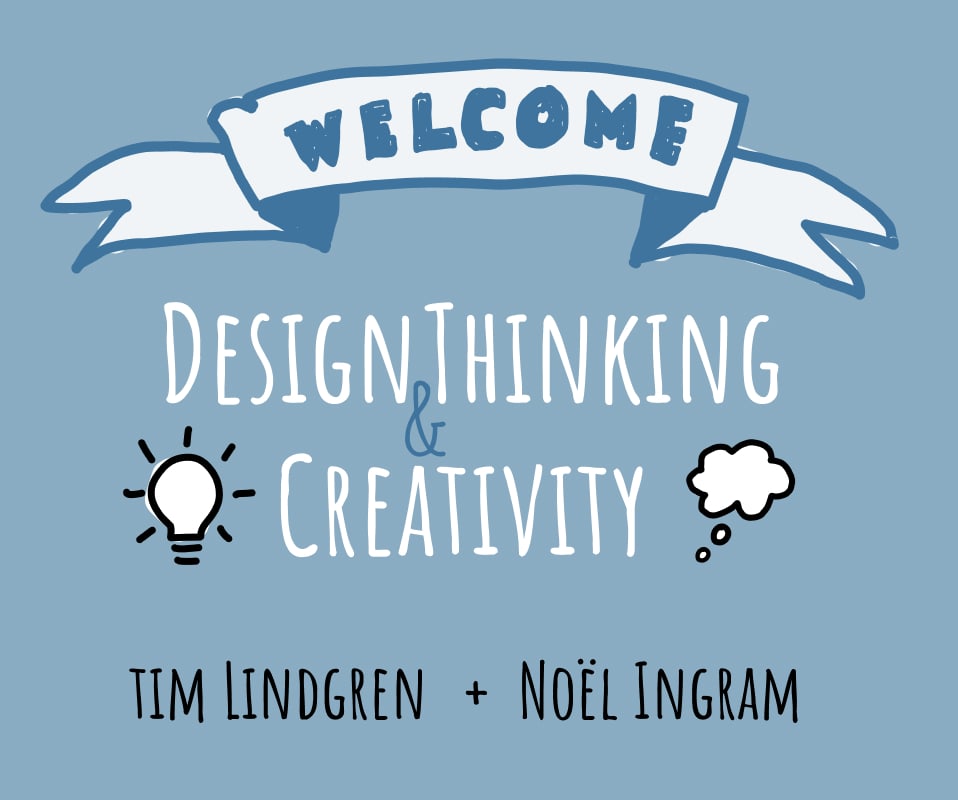In Spring 2022 I taught (with Noël Ingram) a Design Thinking and Creativity course in the Applied Liberal Arts Bachelor’s Degree in the Woods College of Advancing Studies at Boston College.

Course Description
This course is meant to help us expand our creative toolkit for engaging with an increasingly uncertain and complex world. We’ll explore methods to think creatively with others, practices to fostering individual creativity, and ways to expand our thinking beyond just the brain with technologies, other people, and our bodies.
We will take a “reflection-in-action” approach that’s typical of design and the arts: try things, reflect on what happens, repeat.
This will give us opportunities not just to learn about design thinking and creativity, but also to design our thinking and learn about ourselves. This will mean intentionally reflecting on how our minds work and assembling the resources, methods, and practices that will best support creativity and learning in our lives.
Course Outcomes
By the end of this course, you should be able to:
- Practice Reflection-in-Action: Be able to describe the basic methods and mindsets of design thinking – Looking, Understanding, Making, and Adapting – and apply them to contexts that are meaningful to you.
- Engage Your Extended Mind: Know how to think well outside your brain by getting ideas of your head, enlisting your emotions and your body, and collaborating with other people
- Design Your Thinking: Craft a personalizing approach to design thinking and a toolkit of individual practices to support your creativity
- Connect the Dots: Develop a practice of connective thinking that helps grow new ideas and fosters integration between design thinking, your other liberal arts studies, your own experiences.
- Live the Questions: Develop a practice of creative inquiry and curiosity that allows you to respond to ambiguity, iteration, and learning-by-doing.
Textbooks (with ISBN ) & Readings (Required)
Creative Acts for Curious People: How to Think, Create, and Lead in Unconventional Ways.
This book comes out of the Stanford Design School (d.school) and is a collection of “assignments” that reflect the many experiences students while studying human-centered design in their program.
- Stein, Greenberg S, Stanford d.school, and David M. Kelley. Creative Acts for Curious People: How to Think, Create, and Lead in Unconventional Ways. New York: Potter/Ten Speed/Harmony/Rodale, 2021. ISBN: 1984858165
You can buy copy of the text from the BC Bookstore or you can visit the books’s website for other options.
The LUMA System
The LUMA System is a collection of human-centered design methods meant to help organizations and individuals be more innovative. Its modular approach is meant to help us remix and customize design thinking methods to fit different purposes and contexts.
- LUMA Workplace – an online platform for the LUMA System human-centered design framework.
Our Class Notebook
Unless otherwise noted, all the other materials for the course will be available in Notion which you can access via Canvas modules. You can think of the class notebook as a collaborative text with a layer of our related notes that will grow as our learning in the course evolves.
Course Modules
- Module 1 | Introduction (Jan. 18)
- Module 2 | Attention and Empathy (Jan. 24)
- Module 3 | Connecting the Dots (Jan. 31)
- Module 4 | Thinking Outside the Brain (Feb. 7)
- Module 5 | Finding Inspiration, Generating Ideas (Feb. 14)
- Module 6 | Trying Out Ideas (Feb. 21)
- Module 7 | The Feeling of Creativity (Feb. 28)
- — Spring Break —
- Module 8 | Framing Problems (Mar. 15)
- Module 9 | Tools for Thinking (Mar. 22)
- Module 10 | Cultivating Diverse Perspectives (Mar. 29)
- Module 11 | Creative Relationships (April 5 – Online Week)
- Module 12 | Telling the Story (April 12 – In Person Week)
- Module 13 | Portfolio Work (April 19 – Online Week)
- Module 14 | Portfolio Work – Getting Feedback (April 26 – Online Week)
- Module 15 | Course Wrap-Up (May 3 – In Person)